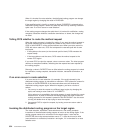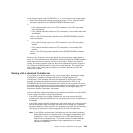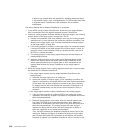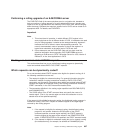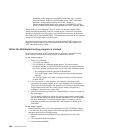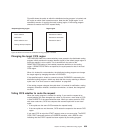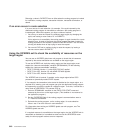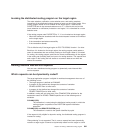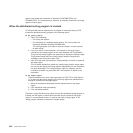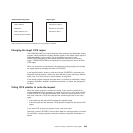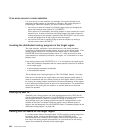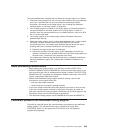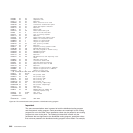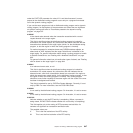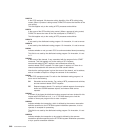region, even though the transaction is defined as ROUTABLE(YES) and
DYNAMIC(YES). The transaction may, however, be statically routed from the target
region to a third region.
When the distributed routing program is invoked
For inbound Web service requests that are eligible for enhanced routing, CICS
invokes the distributed routing program at the following points:
On the routing region:
1. Either of the following:
v For routing the request.
v For notification of a statically-routed request. This occurs when the
transaction definition specifies DYNAMIC(NO).
The routing program is not able to route the request. It could, however,
do other things.
2. If an error occurs in route selection—for example, if the target region
returned by the routing program on the route selection call is unavailable.
This gives the routing program the opportunity to specify an alternate target.
This process iterates until the routing program selects a target that is
available or sets a non-zero return code.
3. After CICS has tried (successfully or unsuccessfully) to route the request to
the target region.
This invocation signals that (unless the routing region and the target region
are one and the same) the routing region’s responsibility for this transaction
has been discharged. The routing program might, for example, use this
invocation to release any resources that it has acquired on behalf of the
transaction.
On the target region:
These invocations occur only if the target region is CICS TS for z/OS Version
3.1 or later and the routing program on the routing region has specified that it
should be reinvoked on the target region:
1. When the transaction associated with the request starts on the target
region.
2. If the transaction ends successfully.
3. If the transaction abends.
Figure 64 on page 643 shows the points at which the distributed routing program is
invoked, and the region on which each invocation occurs. Note that the “target
region” is not necessarily remote—it could be the local (routing) region, if the
routing program chooses to execute the request locally.
642 Customization Guide



